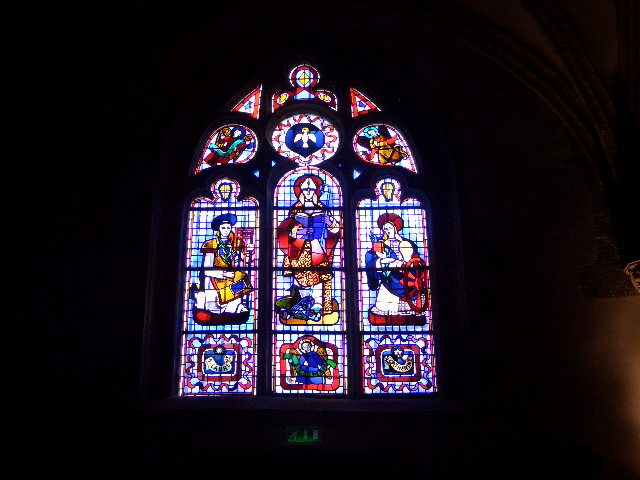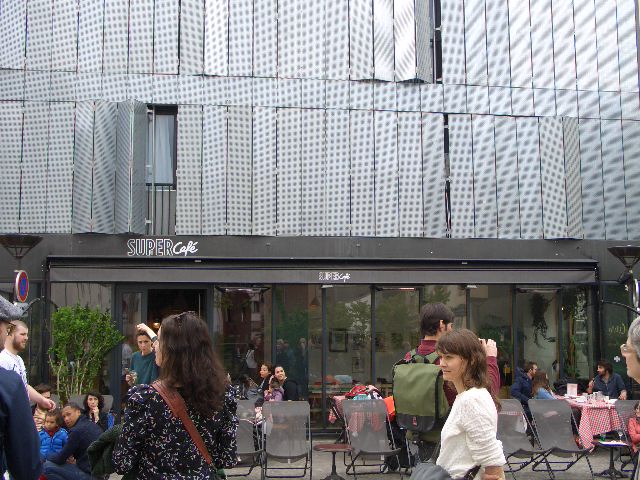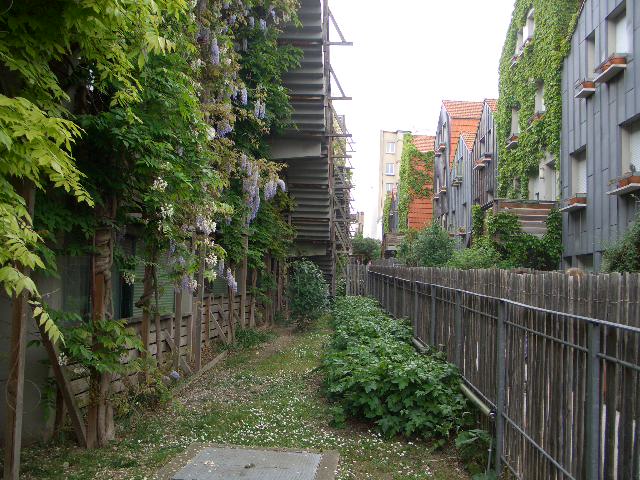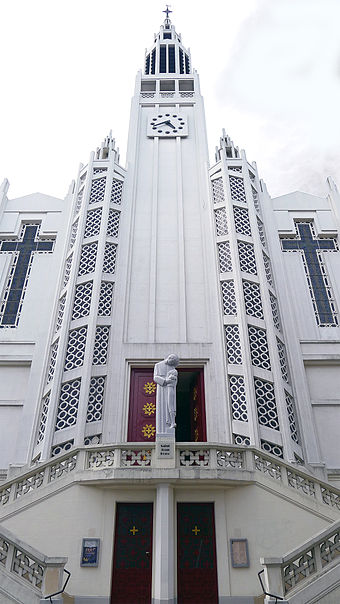On the other side of the southern wall of Père Lachaise cemetery, Le Jardin Naturel – the natural garden – has been left to self-seed and native species encouraged to proliferate thanks to chemical-free, eco-friendly maintenance. It’s tucked in behind rue de Bagnolet and feels, over its 6300 square metres, more like a walk in the country, with birdsong and sunlight breaking through spring leaves in patches. It’s unusually unkempt for a city park, charming and rambling, with signs offering information about the indigenous plants. Here, an oak, there a field maple, copper birch, bellflowers, ferns and so on in a tapestry of green, and pink, and gold.
I had forgotten the little park was there until yesterday when we came upon it during a “randonnée urbaine” organised by local bookstore Le Merle Moqueur. Our expert guide was Nicolas Le Goff, whose excellent new book, L’Autre Paris, I’d brought weeks ago during a fact-finding sortie to FNAC. Happily, J and M agreed to come and we joined about 15 others (mostly women, as another walker noted while we were milling about waiting to begin) for the 90-minute walk. We started at Square Edith Piaf and ended with a signing at the bookstore. (When J observed that it was the first time she’d seen the statue of the Little Sparrow, M responded dryly that she was often skirted by locals and their bottles, which we all agreed was somehow appropriate.)
My hope was that Le Goff, whose book details 10 promenades around the greater city with a focus on architecture, urban design, parks, street art, culture and food, would offer some insight into my ’hood. I was not disappointed. It turned out that many of the participants were also locals, and he clearly felt the pressure to give us something special. At one point, as we walked through an innovative social-housing development, Le Goff asked J and me if we had seen it before. Our shaking heads elicited a very pleased, “Yes!”
We began at Campagne à Paris, which is utterly village-like in its spring finery, then tacked south through manicured Square Séverine, along the narrow elevated street that overlooks rue de Bagnolet from which we could see two elegantly curved staircases at the front of houses that once sat amid vineyards. Our path took us through the cemetery at the back of Eglise Saint-Germain de Charonne, and Le Goff allowed a few minutes for us to go inside the medieval church (the first time I’d seen it open) whose interior dimness showed off the brilliant hues of the stained-glass windows.

Crossing rue des Pyrénées, Le Goff, who has previously worked at cultural centre Centquatre and clearly loves his subject, took us through the public housing development around Place Mélina-Mercouri, pointing out energy-saving features (heat-retaining construction materials) and how car-free thoroughfares linked adjacent schools. In this “eco-quartier”, there’s child-friendly, ethical Super Café, gardens and a sense of light and space. The design was created in consultation with the residents, he said.

Cutting through Place de la Réunion, being prepped for the Sunday market, Place Marc Bloch and Jardin Casque d’Or, we emerged at rue des Vignoles, and another corner of the arrondissement that was completely new to me. And this is where having a guide really paid off because we were able to peep behind a private gate into another development, this one all external staircases and green walls. It was so lovely. And utterly hidden from the street.

Next door was the brick-red cobbled courtyard of Flamenco en France, opposite a retro barber shop, and down from tempting bar Café de l’Amitié and organic restaurant La Petite Fabrique (where J and I went last night for delicious homemade quiche, brandade de morue and natural wines).
Our route back to rue de Bagnolet also offered a glimpse at the art deco Eglise Saint-Jean-Bosco de Paris, built in 1937, with its 53-metre clock tower.

Photo: Wikimedia Commons
Paris rewards curiosity at almost every turn, but it does help to be pointed in the right direction. All around Père Lachaise are little cul-de-sacs. We wound our way up and down several, one through Le Jardin Naturel and another that seemed to be lined with warehouses, where work was going on to re-lay the cobbled surface. I immediately wanted to live there.
Yet another took us past the Cité Aubry community garden, one of 14 in the arrondissement, where weekend gardeners were happy to pause in their work to explain the project to us. (I discovered later from the website that the garden was created nearly three years ago, and there is a long waiting list for plots.) The walls surrounding the garden are covered in beautiful murals, and the garden makes excellent use of wooden palettes for planters, dividers and racks. The most magnificent yellow and red tulips filled one box; strawberry plants donned white flowers in pots by the red-arch entry.
We finished back at the bookstore, which has recently had an update, filling its industrial-style interior with more light and opening up the space. We took the opportunity for a browse, particularly the graphic novel section; J bought a copy of L’Autre Paris and we made plans to do the itineraries (watch this space).
The 20th can feel like the ultimate urban mash-up, dominated in so many places by nondescript high-ish-rises from decades past. The walk with Le Goff revealed some of the neighbourhood’s hidden greenery and, even better, offered a chance to learn about projects putting heart and soul into the built environment. Yes, another Paris, indeed.










Once again. Beautiful words and imagery
LikeLiked by 1 person
Thank you for reading and for the lovely feedback! x
LikeLike
It’s so nice to discover more in your own hood. I love those walking tours
LikeLiked by 1 person
You’re so right about the charms of hidden Paris. I can’t wait to do some more of these walks!
LikeLiked by 1 person